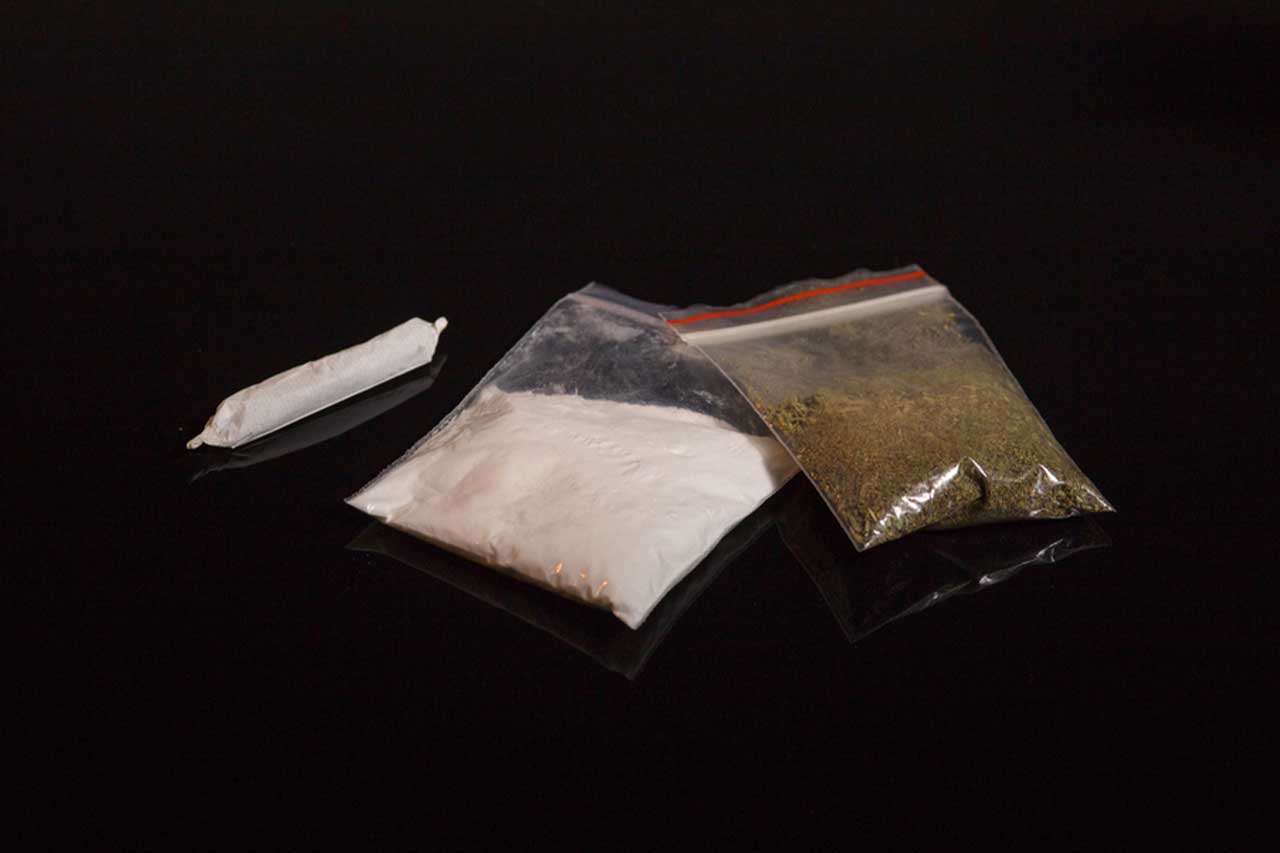Weed and coke (cocaine) are two of the most commonly abused drugs in the United States. Both produce very different side effects and impact the brain differently. While cocaine is a central nervous system stimulant that elevates dopamine and produces neural excitability in the brain, marijuana is a psychoactive drug that has sedative and hallucinogenic side effects. Although these drugs produce intense highs on their own, many people have begun to experiment with simultaneous coke and weed use. Considering the risks both drugs also pose on their own, what happens when you combine them?
Cocaine vs. Marijuana
Cocaine
Also known as crack and coke, cocaine is an illicit central nervous system stimulant. As a Schedule II drug, cocaine is recognized for its high potential for abuse, dependence, and addiction. Common street names for cocaine include blow, coca, flake, snow, and soda cot.
Coke can be snorted, injected, or smoked for its euphoric and energy-boosting side effects. This drug is usually sold as a white powder, while crack cocaine usually comes in white, solid chunks. When high on cocaine, users may feel extremely happy, energetic, impulsive, and overly confident.
Common side effects of cocaine include:
- Alertness
- Euphoria and well-being
- Anxiety
- Paranoia
- Impulsive and risky behavior
- Increased false sense of confidence
- Increased blood pressure
- Increased heart rate
- Dilated pupils
- Insomnia or difficulty sleeping
- Loss of appetite and weight loss
- Restlessness
- Irritability
The comedown from cocaine is usually difficult as the drug’s euphoric effects wear off, resulting in a depressive episode. Coke works by elevating dopamine levels and blocking receptors from absorbing the excess, allowing it to collect and produce an intense high. For this reason, cocaine withdrawals are usually difficult to overcome without medical detox, and the drug is difficult to quit without help.
Marijuana
Also called weed, Mary Jane, pot, ganja, and cannabis, marijuana is a psychoactive drug from the cannabis plant, which is native to Central and South Asia. The cannabis plant has been used for recreational purposes for centuries and remains a popular drug of abuse to this day.
Marijuana usually looks like a shredded brownish or grayish-green mixture of dried cannabis flowers, leaves, seeds, and stems. It may also be made into an oil or extract that’s placed into cartridges for vaping or e-cigarette use. Weed may also be cooked or baked into foods, also referred to as edibles.
Marijuana is usually consumed orally in foods and drinks or smoked. Common side effects of weed include:
- Relaxation
- Sedation
- Bloodshot eyes
- Increased heart rate
- Anxiety
- Blood pressure
- Increased appetite
- Paranoia
- Confusion
- Drowsiness and sedation
While many argue that weed is the least harmful of all recreational drugs, it still poses various risks and should not be misused. Doctors might prescribe medical cannabis to treat certain ailments. Still, there’s no telling what’s in weed that’s purchased illegally or on the streets. The risk of ingesting or smoking additional harmful chemicals from marijuana is higher when the drug is obtained illegally.
Effects & Symptoms of Weed Laced With Cocaine
Some people have taken to ingesting or smoking weed laced with crack, sometimes unknowingly. While some people choose to use weed mixed with cocaine, it’s not uncommon for drug dealers to combine stronger drugs with their products to make more money.
From a drug dealer’s mentality, giving customers weed laced with coke not only makes the product heavier and therefore more expensive, but it also adds a highly addictive quality to the drug. Lacing their drug ensures that customers become hooked to the dealer’s weed and therefore solidifies the dealer’s clientele. As you can imagine, this is wrong on many levels.
Regardless of whether someone takes cocaine and weed together knowingly or accidentally, the risks remain the same. Common effects of weed laced with coke include:
- Reducing the stimulant side effects from cocaine, which can lead to further cocaine use
- Prolonging the high from cocaine
- Sedation and drowsiness
- Reducing cocaine cravings
- Increased risk of heart attack, blood clots, and seizures
Many people smoke cocaine-laced weed blunts (“woolies”) to decrease the undesirable side effects of crack, such as cravings and insomnia, as well as to prolong the drug’s high. However, not only can the use of both drugs apply extra stress to the cardiovascular system, weed can counteract cocaine’s vasoconstrictive effects, allowing more of the stimulant to enter the bloodstream at a faster rate.
If any drug enters one’s system quicker than it’s meant to, it can lead to an overdose. Even if cocaine is used before marijuana and the side effects have worn off, cocaine stays in the body, which can increase the risk of toxicity. This means that the drugs will still react with each other even though they weren’t taken together. To reduce the unwanted side effects of cocaine, users might smoke or ingest weed.
However, overdose symptoms like elevated heart rate, increased body temperature, nausea, vomiting, chest pain, tremors, and others may occur if marijuana and cocaine are taken together. Cardiac arrest and other heart-related problems may also occur if the two drugs are taken together.
Mental illness is an additional risk of mixing coke and weed, as both drugs are known for producing paranoia and anxiety. The comedown from cocaine also includes depressive episodes, which can worsen the user’s mental state. Psychosis is also a possible risk of taking high doses of either drug as well as taking them simultaneously.
Treatment for Cocaine & Weed Addiction
If you or someone you care about is struggling with marijuana or cocaine addiction, it’s critical to seek out professional residential addiction treatment. Fortunately, our luxury drug and alcohol rehab in South Florida offers a variety of addiction and mental health services. We help people with substance use disorders, mental illnesses, or both.
We usually start patients off with medically monitored detox, which is held at our high-end rehab to ensure patients are safe and comfortable. Detox is an important step in treating drug use disorders, as it works to mitigate the discomfort of this process and decrease the risk of relapse.
For further information about our cocaine addiction treatment or other levels of care, call Seaside Palm Beach today at 561-677-9374.
Related Reading:
Marijuana & Panic Attacks
How Does Cocaine Affect The Lungs?












